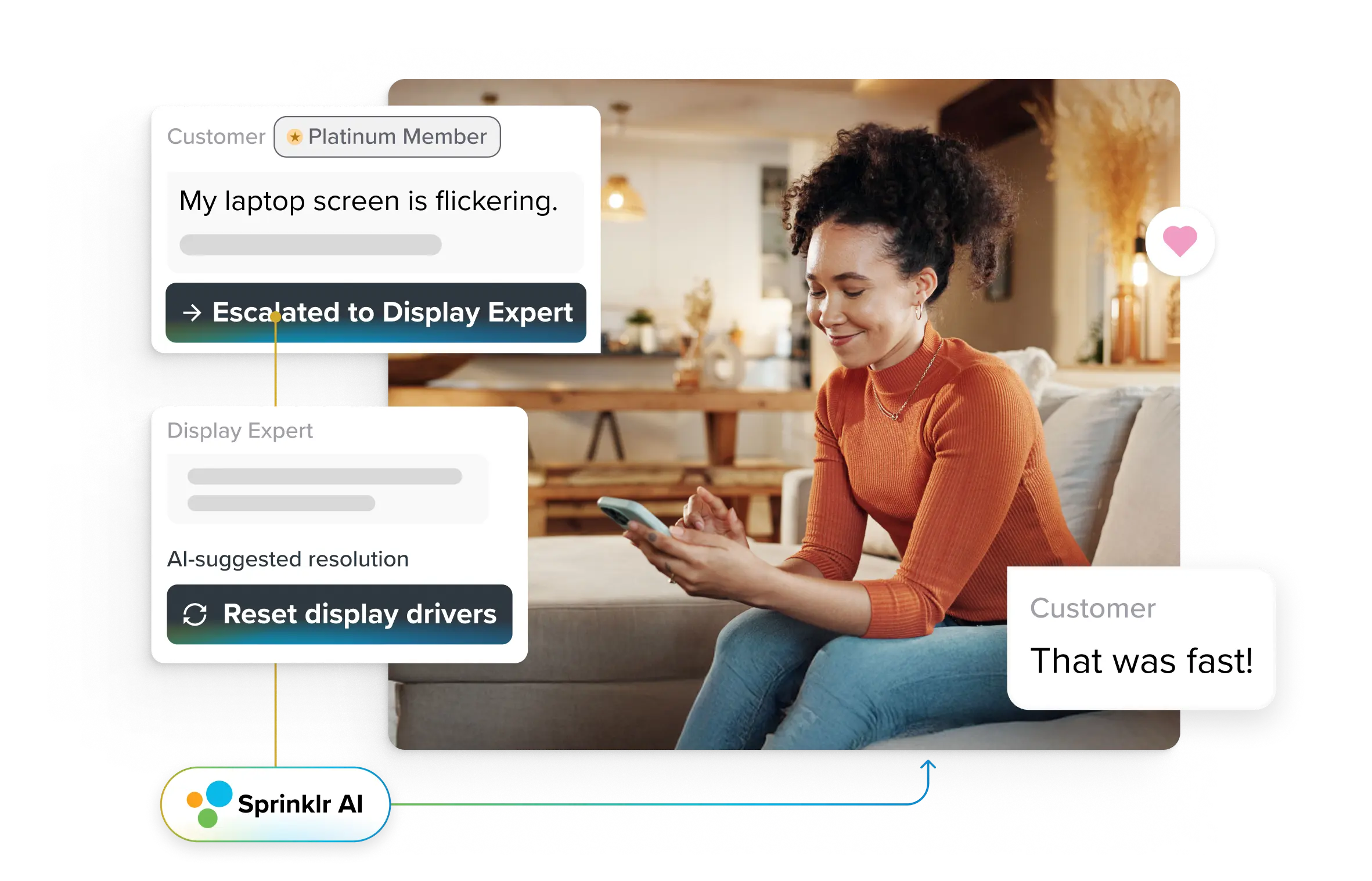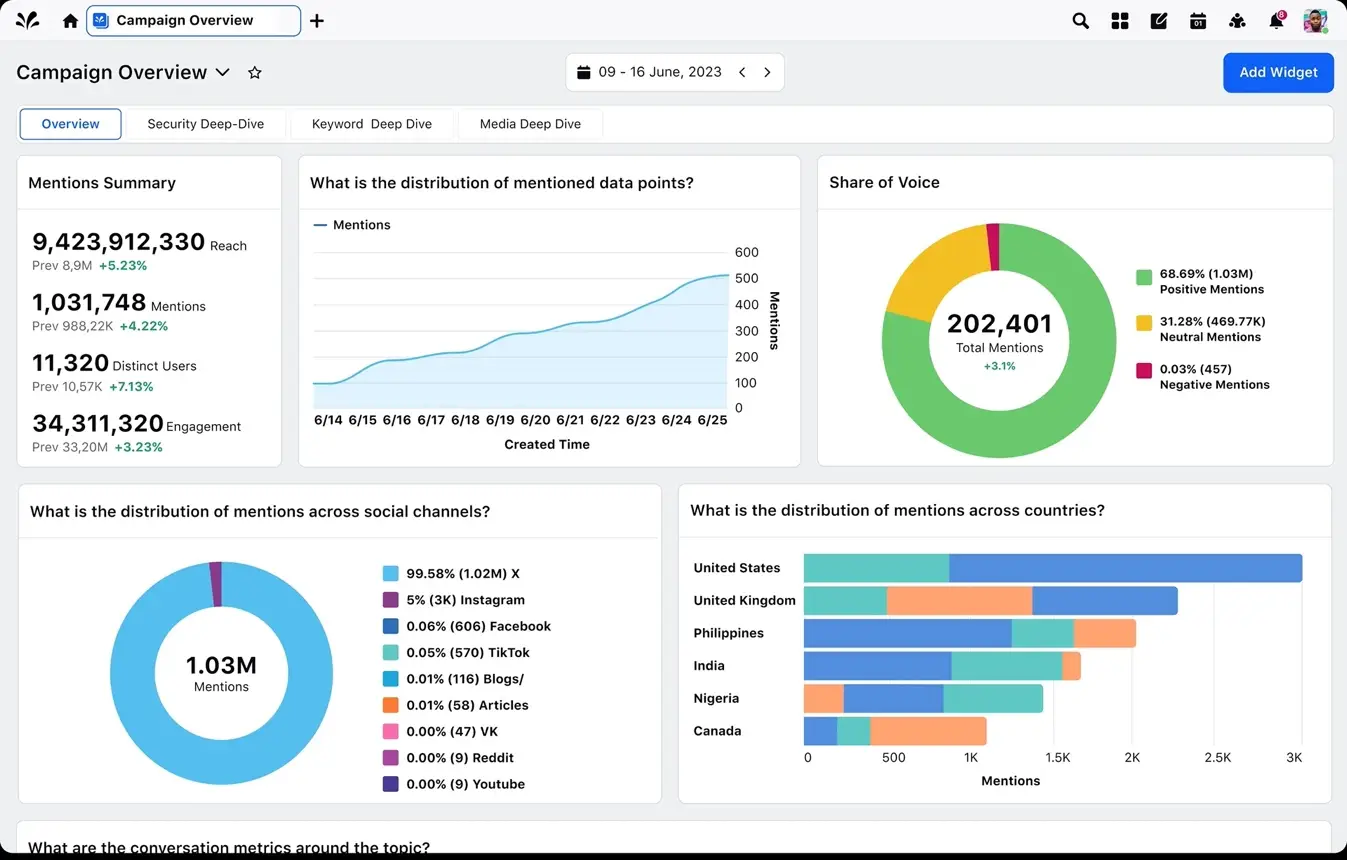Transform CX with AI at the core of every interaction
Unify fragmented interactions across 30+ voice, social and digital channels with an AI-native customer experience platform. Deliver consistent, extraordinary brand experiences at scale.

Contact Center Workforce Optimization: Skill-Pool Matching
Contact centers are evolving into intelligent customer engagement hubs, but unlocking their full potential starts with smarter workforce strategies. One game-changer? Skill-pool matching. By aligning agent skills with real-time demand across channels, this approach ensures the right people handle the right tasks at the right time.
Far more than a staffing upgrade, skill-pool matching helps enterprises shift from reactive scheduling to precision-led service delivery. The impact shows up as higher agent utilization, seamless cross-channel coverage, and consistently better customer outcomes.
In this blog, we’ll explore how contact center workforce optimization, powered by dynamic skill-pool matching, is helping leading enterprises close operational gaps, reduce friction, and scale experience excellence.
- What is contact center workforce optimization?
- The role of skill‑pool matching in contact center workforce optimization
- How to build skill pools in your contact center workforce
- Skill-based workforce optimization: Challenges & best practices
- The real-world business impact of skill‑pool workforce optimization in contact centers
- The future of contact center workforce optimization
- Skill‑pool optimization is the future of enterprise CX
What is contact center workforce optimization?
Contact center workforce optimization (WFO) refers to the set of tools, strategies, and processes used to ensure the right number of agents with the right skills are available at the right time to deliver excellent customer service efficiently and cost-effectively.
In simpler terms, WFO helps contact centers:
- Plan how many agents they’ll need based on expected call/chat volumes.
- Schedule shifts so coverage matches demand (e.g., more agents during peak hours).
- Monitor performance to ensure agents are doing well and customers are happy.
- Train and coach agents to improve skills and service quality.
- Collect feedback and insights to keep improving operations.
For example, a national retail chain can optimize its customer service workforce ahead of a holiday sale by analyzing historical data, current trends, and agent skill sets. With this insight, the retailer can forecast demand across channels and strategically assign specialized agents to different types of inquiries.
The role of skill‑pool matching in contact center workforce optimization
Skill pool matching is a core component of workforce optimization, especially in modern, omnichannel contact centers. Within WFO, skill pool matching ensures that agents with the right expertise are assigned to the right tasks at the right time. It’s not just about having enough agents available — it’s about having the right agents available.
For example, WFO systems track agent skills (e.g., product knowledge, language fluency, or handling complex escalations) and use that data to:
- Route inquiries to agents best equipped to handle them
- Build shift schedules that reflect not just headcount needs, but skill coverage across channels
- Plan training and upskilling to fill skill gaps in the workforce
This alignment improves first contact resolution, reduces transfers and escalations, and enhances the overall customer experience while using resources more efficiently.
The limitations of schedule-only optimization
While traditional scheduling meets baseline staffing requirements, it fails to account for the complexity of modern contact center operations. Without skill intelligence, scheduling engines treat all agents as interchangeable, creating systemic inefficiencies that impact both service quality and workforce health.
For example, a commercial bank's contact center handles thousands of calls daily, from loan inquiries and fraud reports to multilingual support and high-net-worth client requests. Relying on generalist agents to handle tickets is inefficient, resource-intensive and lowers service quality. It is far more effective to assign specialized agents to specific queues based on skill and context.
- Generic agent pools result in suboptimal customer-agent pairing: Customers are routed to agents lacking the right context or technical knowledge, resulting in lower CSAT and prolonged handle times.
- Increased transfers and repeat contacts for specialized issues: Misrouted interactions require escalation or callbacks, increasing operational cost and eroding customer trust.
- Limited ability to scale differentiated service: Enterprises struggle to maintain consistent service levels for VIP customers or compliance-critical queues due to poor skill-to-demand alignment.
- Declining employee satisfaction: Agents are repeatedly placed in situations they aren’t trained for, leading to stress, lower performance and ultimately higher attrition.
Read more about skill-based routing in contact centers.
How skill‑pool matching closes the capability gap
Skill‑pool matching addresses these challenges by operationalizing a more precise alignment between agent capability and interaction requirements. It enables enterprises to dynamically deploy talent based on verified skills, certifications, and proficiencies rather than simply staffing to volume.
Enterprise-level outcomes include:
- Improved occupancy: Agents can be dynamically assigned across multiple queues based on skill relevance, maximizing productivity without overloading teams.
- Reduced churn: Agents operate within their zones of competence, leading to higher engagement, better performance, and longer retention.
- Service-level differentiation: Specialized pools allow enterprises to maintain premium-tier support for high-value or regulated customers, without compromising the baseline performance of contact center as a service in other queues.
- Optimized cost-to-serve: By aligning resource deployment with actual skill requirements, organizations can reduce idle time, increase utilization, and avoid overstaffing, achieving significant reductions in operating expenses.
- Increased scalability of specialized support: Skill‑pool structures allow enterprises to scale premium or regulated support offerings (e.g., compliance, technical expertise, multilingual queues) without needing to restructure core staffing models.
- Greater agility during surges or service shifts: With clearly defined skill pools and dynamic contact center routing, enterprises can respond faster to sudden changes in demand, such as product launches, crisis events, or seasonal peaks, without compromising SLA adherence.
- More accurate performance benchmarking: Segmenting contact center metrics like AHT, CSAT, or FCR by skill pool provides deeper insight into what works, helping operations and QA teams identify training gaps, coaching needs, or high-performing profiles with precision.
- Improved time-to-proficiency for new hires: By aligning new contact center agents with skill-specific queues and structured learning paths, enterprises can accelerate ramp-up time and minimize early-stage quality issues.
- Reduced compliance and reputational risk: Critical interactions, such as those related to financial services, healthcare, and data privacy, can be reliably routed only to agents with certified training, reducing exposure to errors and non-compliance.
Gulf Bank aces compliance with AI-powered workforce optimization
Gulf Bank partnered with Sprinklr to modernize its customer service operations across digital channels like WhatsApp, Instagram, and X.
By adopting Sprinklr, the bank:
- Eliminated platform-switching and introduced AI-powered efficiency across workforce processes.
- Automated case routing based on skill-based logic ensured that the right agents handled the right queries, improving response accuracy and reducing resolution time.
- Features like Stickiness Timeout supported agent continuity, while AI-generated responses reduced manual effort and cognitive load.
“We are now able to extract reports with just a few clicks – no coding or scripts required. Reports can now be tailored and designed the way we want them to be, and doing so is extremely easy thanks to the Sprinklr team, who are always ready to support and train us.”

These enhancements reflect core principles of workforce optimization, not just streamlining workflows but aligning agent capabilities with customer needs in real time.
As a result, Gulf Bank saw a 17% increase in case handling capacity and cut average first response time from 58 minutes to under six minutes. Agent satisfaction rose as well, driven by smarter task allocation and simplified reporting. The result: faster, more consistent service and stronger workforce engagement.
Let’s move on to how enterprises can build and manage these skill pools effectively. It is important to lay a solid operational foundation for AI-powered contact center routing, agile resourcing, and long-term CX resilience.
Read more: How to create a contact center routing strategy that works
How to build skill pools in your contact center workforce
Effective skill‑pool design requires more than tagging agents by job function. Enterprises must establish a tightly governed system that connects WFM, CRM, QA, and routing engines built on verified skill data and responsive to performance insights. The goal is precision, deploying the right capability at the right time, across any channel, at scale.
Core capabilities required for this include:
1. Unified and validated skills architecture
Establish a centralized, role-independent skill taxonomy that maps technical certifications, soft skills (e.g., empathy, conflict resolution), product knowledge, language fluency, and omnichannel expertise. Source and validate these through a mix of LMS data, QA reviews, real-time KPIs, and supervisor evaluations.
Why it’s required: A unified skill architecture ensures consistency in routing, accurate forecasting, and long-term capability development across the agent lifecycle.
2. Intelligent, performance-linked routing, and scheduling
Leverage AI engines that combine historical performance, active skill tags, channel demand, and customer profiles to route interactions and assign shifts dynamically. Unlike static rules, intelligent routing evolves continuously based on real-time outcomes and agent readiness.
Why it’s required: It ensures high-resolution skill deployment, shortens resolution time, and adapts quickly to fluctuations in volume and complexity.
3. Cross-platform operational intelligence
Ensure seamless integration between WFM, CRM, quality, and learning systems. Skill matching is only as good as the data behind it — performance trends, recertifications, recent coaching, and feedback loops must all feed into a unified decision layer.
Why it’s required: Integrated intelligence removes operational blind spots and enables real-time recalibration of skill pools based on evolving agent performance and business priorities.
Pro tip: Don’t rely solely on QA scores or CSAT to evaluate skill effectiveness; look at the full context behind every interaction.
Sprinklr Insights aggregates real-time signals from CRM, WFM, social, messaging, email, voice and support channels, creating a unified intelligence layer across all customer touchpoints.

It surfaces sentiment trends, identifies recurring service gaps, detects product or language-specific escalations and flags spikes in volume linked to campaigns or outages. These insights enable workforce leaders to refine skill pools with data-backed precision, revealing underutilized capabilities, forecasting demand shifts, and linking agent performance to customer outcomes across every channel.
4. Agent-led skill visibility and progression
Create secure self-service interfaces for agents to update training completions, request peer or supervisor endorsements, and flag interest in new skill pools. Supervisors must retain oversight through audit trails, validations and approval workflows. Products like Sprinklr’s Knowledge Base Software can help reduce handle times and support continuous upskilling by making knowledge accessible in real-time. Agents have instant access to approved answers, process guidance and learning content.
Why it’s required: This empowers agents to own their development while ensuring skill data remains current, auditable, and deployment-ready.
5. Skill pool demand forecasting and gap analytics
Incorporate forecasting engines that analyze channel trends, campaign calendars, and historical case complexity to anticipate future skill needs. Pair this with gap analysis tools that highlight emerging shortages by role, skill, or region.
Why it’s required: Proactive skill demand planning reduces training lag, improves service readiness, and supports agile workforce scaling.
6. Real-time skill pool performance dashboards
Deploy live dashboards that track skill pool utilization, CSAT by skill tag, average handle time by capability, and attrition risk within specialized cohorts. Integrate with QA and coaching data for deeper insight into skill quality, not just presence.
Why it’s required: Continuous visibility into how skill pools perform in production ensures timely interventions and smarter talent investment decisions.
Enterprise skill-pool readiness checklist:
To assess your organization’s maturity in deploying skill‑pool matching within WFO, ensure that:
- Skills taxonomy is defined, centralized and decoupled from job titles
- Validated skill data is integrated with WFM, CRM, and routing systems
- AI routing logic supports dynamic matching based on proficiency, performance, and context
- WFM schedules are generated with skill-based constraints and flex pools
- Supervisors have visibility into skill drift and upskilling needs
- Agents can view and manage their skill profiles with role-based access
- Operational KPIs (FCR, AHT, CSAT, shrinkage) are segmented by skill pool and monitored regularly
- Governance processes exist for adding, updating, and retiring skill tags across the org
Enterprises that treat skill-pool management as a strategic lever, not a tagging exercise, see measurable returns in both CX and workforce ROI. By embedding skill intelligence into every layer of WFO, organizations can shift from reactive staffing to proactive capability deployment, building more resilient, high-performing service operations.
Skill-based workforce optimization: Challenges & best practices
The transition from static staffing models to skills-based deployment introduces new operational dependencies. Here are some common challenges you might face and their fixes:
Key challenges for enterprise teams | Best practices for enterprise implementation |
Unreliable skill data: Without a validated, centralized inventory, WFM and routing systems rely on outdated inputs, resulting in misrouted interactions, uneven workloads, and missed SLAs | Align skill tagging with business outcomes: Design skill tags that reflect measurable goals, such as reduced escalations, faster resolution, or compliance adherence, so that skills directly support operational impact |
Disconnected systems: Poor integration across WFM, CRM, QA, and LMS tools limits visibility into agent skills and blocks real-time matching, driving longer resolutions and inconsistent service | Standardize skill endorsement and validation: Implement clear protocols for skill verification through QA scores, supervisor assessments, and peer endorsements to maintain consistency and trust in skill data. |
Outdated skill taxonomies: Static skill definitions lag behind product, customer, and regulatory changes, causing misalignment between agent capabilities and service demands | Incorporate customer feedback into skill insights: Leverage CSAT, CES, and verbatim feedback for contact center management to surface skill blind spots, especially in soft skills or product understanding, that internal systems may miss |
Low operational visibility: Supervisors often lack insight into how skill use affects performance, staffing, or development, hindering forecasting, training strategy and capacity planning | Segment skill pools by interaction complexity: Create distinct tiers for routine, sensitive, or high-stakes interactions, allowing top-performing agents to handle the most complex scenarios efficiently |
Over-skilling vs skill-crowding: Trying to equip every agent with too many skills can dilute specialization and overwhelm both agents and routing systems. | Prioritize critical skills, avoid excessive complexity: Focus on high-impact, frequently used skills and limit redundant or overlapping tags to reduce confusion and improve routing precision. |
Enterprises that institutionalize skill-pool governance, supported by integrated systems and data transparency, unlock a strategic workforce advantage, one that scales with demand while preserving quality and efficiency.
The real-world business impact of skill‑pool workforce optimization in contact centers
Skill-pool matching transforms workforce optimization from a reactive, schedule-driven function into a dynamic, precision-based strategy. Today, contact centers can route each interaction to an agent with the most relevant expertise. The business impact of this is immediate and measurable:
- Reduced average handle time (AHT) as agents resolve issues more efficiently
- Improved customer satisfaction (CSAT) through faster, more accurate responses
- Better schedule adherence and workload distribution, driven by more flexible agent assignments
- Higher agent satisfaction, due to fewer idle hours, greater variety in work and clearer skill progression paths
For example, a leading Middle Eastern e-commerce retailer exemplifies this shift. By consolidating four fragmented systems into Sprinklr’s unified, AI-powered platform, the company enabled intelligent skill‑pool routing and capability-based workload distribution across its support team.
In just under eight weeks, the retailer launched Sprinklr Service, immediately improving agent productivity, reducing handling times, and delivering fast, multilingual, and personalized support at scale.
Using Sprinklr AI+, agents could generate tone-appropriate, polished responses in seconds and translate messages in real-time across multiple languages. This generative AI-powered technology further empowered skill‑based tasking by allowing multilingual agents and specialized responders to handle a broader, more complex range of queries. Within ten days, the team saw measurable gains in both response speed and quality management.
Also read: How generative AI improves agent experience
The future of contact center workforce optimization
The future of workforce optimization will hinge on intelligent deployment, not just staffing levels. Enterprises are moving beyond static schedules toward real-time orchestration, leveraging AI, predictive analytics and integrated talent systems to deploy the most capable agent for every customer need.
Strategic trends defining the future of WFO:
- Predictive skill demand modeling: AI-driven forecasting will project not only volume but the specific skill sets required, enabling proactive upskilling, cross-training, and recruitment aligned to future service needs.
- Real-time workforce orchestration: Static shift planning will give way to systems that continuously optimize agent allocation on a minute-by-minute basis, based on skills, customer context, and service-level requirements.
- Integrated talent intelligence ecosystems: WFO will converge with learning, performance, and engagement systems, allowing organizations to manage skills dynamically across the agent lifecycle.
- Hyper-personalized agent development: Continuous contact center analytics will inform individualized coaching and learning paths, accelerating readiness for complex roles and improving agent satisfaction.
- Workforce marketplaces and skill agility models: Agents will increasingly opt into specialized pools, queues, or initiatives based on their evolving skills and interests, supporting more flexible, resilient operating models.
The future of contact center workforce optimization lies in deploying the right people with the right capabilities. Enterprises that invest in intelligent skill orchestration will set the benchmark for scalable, high-quality customer experience.
Skill‑pool optimization is the future of enterprise CX
Enterprises navigating the complexities of modern customer experience need more than traditional workforce models. Skill‑pool-based workforce optimization offers a scalable, intelligent framework to align agent capabilities with ever-evolving service demands. It improves resolution rates, reduces burnout, and drives operational agility. It's not just an efficiency play; it is a strategic imperative for long-term CX excellence.
Sprinklr Service brings this strategy to life with AI-powered skill matching, real-time orchestration, and tools that actively empower agents. The result is faster, higher-quality responses, better customer outcomes, and a workforce ready for what’s next. See how Sprinklr Service transforms your workforce with intelligent skill‑pool matching by booking a demo today.
Frequently Asked Questions
Skill‑pool matching aligns customer inquiries with agents based on validated skills such as product knowledge, language fluency or channel expertise. It ensures the right agent handles the right case, improving resolution time and customer satisfaction.
Workforce management focuses on forecasting, scheduling and staffing efficiency, while workforce optimization adds layers like skill-based routing, quality monitoring and performance analytics. Optimization prioritizes both operational control and service outcomes.
Yes, with the right technology, skill pools can be updated in real-time based on volume surges, agent availability or campaign-specific demands. AI-driven systems like Sprinklr enable dynamic reallocation without disrupting service quality.
Key indicators include improvements in first contact resolution (FCR), average handle time (AHT), CSAT scores, SLA compliance and agent productivity. These metrics directly reflect how well agent capabilities are matched to case complexity.
AI powers intelligent routing, real-time forecasting, performance analytics and even agent coaching. It enables faster, smarter decisions that optimize both customer experience and operational efficiency.







